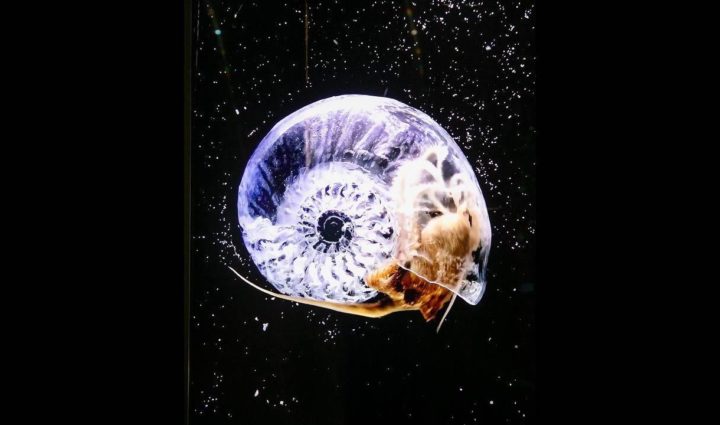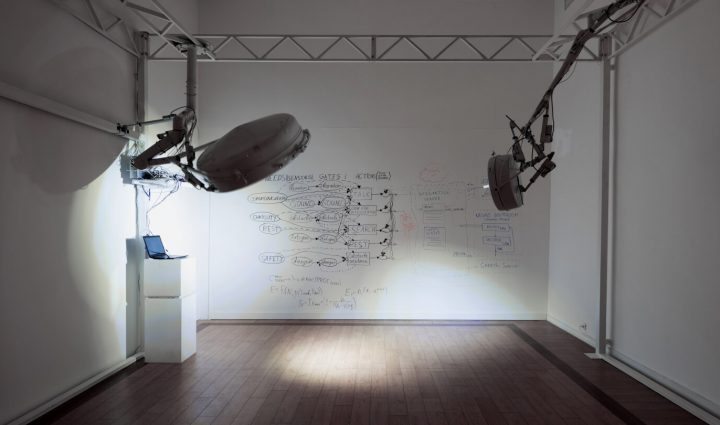The international conference “Daemons in the Machine. Anticipating Artificial Intelligence” preceded the exhibition “Daemons in the Machine” which took place in 2018 at MMOMA (Moscow).
The goal of the conference is to create a live platform for international interdisciplinary dialogue between contemporary artists, scientists, philosophers, curators and art historians.
The main focus of the conference concerns study and application of leading-edge technologies in the area of machine learning and work with artificial intelligence in the field of contemporary art, and the subsequent representation of the art in museums.
Participants
Konstantin Anokhin, Doctor of Medical Sciences, Corresponding Member of
RAS and Russian Academy of Medical Sciences, Head of the Neuroscience Dept. at Kurchatov Institute (Russia)
Mikhail Burtsev, head of Neural Networks and Deep Learning Lab at MIPT, head of iPavlov project (Russia)
Alexander Burenkov, curator, Sr. specialist at the Directory of Regional Development at The
National Center for Contemporary Art (ROSIZO-NCCA) (Russia)
Andrey Egorov, curator, Head of Research Dept., Moscow Museum of Modern Art
(MMOMA) (Russia)
Bradly Dunn Klerks, artist, designer, Sr. Innovation Expert for the Arts and Technology, STARTS x Ars Electronica, General Director of Iris van Herpen (Belgium)
Antonio Geusa, PhD, independent curator and critic, Head of Research and Methodology Dept., ROSIZO-NCCA (Italy)
Joanna Zylinska, PhD, media philosopher, Professor of New Media and Communications, Goldsmiths, University of London (UK)
Maxim Ilyukhin, artist (Russia)
Dmitry Kawarga, artist, participant of the exhibition “Daemons in the Machine” (Russia)
Valeriy Karpov, PhD, Head of Robotics Dept., Kurchatov Institute (Russia)
Oxana Moroz, culturologist, Associate Professor, Moscow Higher School of Social and Economic Sciences (MHSSES) and The Russian Presidential Academy of National Economy and Public Administration (RANEPA) (Russia)
Georgi Nikich, curator, art historian (Russia)
Dmitry Morozov (::VTOL::), artist, participant of the exhibition “Daemons in the Machine” (Russia)
Daria Parkhomenko, founder and curator of Laboratoria Art & Science Foundation (Russia)
Tatyana Chernigovskaya, Doctor of Biological Sciences, Head of the Cognitive Studies Laboratory at the faculty of Liberal Arts and Sciences, Saint Petersburg State University (Russia)
Thomas Feuerstein, artist, participant of the exhibition “Daemons in the Machine” (Austria)
Olga Remneva, art historian (Russia)
Electroboutique (Alexey Shulgin, Aristarkh Chernyshev), artists (Russia)
I. AI-driven art: problems and prospects
Speakers:
Konstantin Anokhin (neurobiologist)
Johanna Zylinska (media philosopher)
Moderator:
Antonio Geusa (curator)
Participants:
Thomas Feuerstein (artist), Dmitry Kawarga (artist), ::VTOL:: (artist),
Electroboutique (Alexey Shulgin, Aristarkh Chernyshov, artists),
Oxana Moroz (philosopher), Egor Kraft (artist),
Olga Remneva (art historian), Maxim Ilyukhin (artist)
- Does art exist beyond the specifically designated realm of human cultural practice?
- Is AI-driven art actually art, or is it a simulacrum of art?
- Should the recent experiments in AI-driven art and machine learning encourage us to (re)turn us to bigger questions such as: What is the purpose of art? What’s art for? Who is art for?
- Conversely, haven’t humans always been technological, i.e. haven’t we always run on algorithms, so to speak? Doesn’t it mean that all art, starting from cave paintings, has always been technological — even if the technologies themselves have changed over time?
- Can artwork be a scientific research at the same time (if it has an object of research and a methodology)?
- How has the development of digital technologies (including AI and deep learning systems) changed our concepts of aesthetics, beauty, ugliness?
- Is art made by non-humans for non-humans possible? Or is art something defined in some significant way by human cultural practices?
II. Borgy and Bes: presentation and reflection
Speakers:
Thomas Feuerstein (artist), Daria Parkhomenko (curator),
Valeriy Karpov (robotics), Mikail Burtsev (speaking AI)
Модератор:
Andrey Egorov (curator)
Participants:
Joanna Zylinska (media philosopher),
Bradley Dunn Klerks (producer), Alexander Burenkov (curator),
Tatiana Chernigovskaya (neurolinguist), Antonio Geusa (curator),
Konstantin Anokhin (neurobiologist)
- The fine line between scientific experimentation and art
- What would constitute a new aesthetics for a new technological reality?
- What new results can an interdisciplinary collaboration bring?
- Value of collaborative practices for scientific and art communities
- Is there an ontological difference between early computer-generated art, net-art etc. and more recently explored forms of AI-driven art? Or is it just a difference of degree, i.e. of the intensity of technological entanglement?
III. The future of a museum, an artist,
a technological company in the presence of AI
Speakers:
Tatiana Chernigovskaya (neurolinguist), Alexander Gostev (Kasperky Lab), Bradley Dunn Klerks (producer)
Модератор:
Mikhail Burtsev (speaking AI), Daria Parkhomenko (curator)
Participants:
Georgi Nikich (curator), Andrey Egorov (curator)
- How can art help in overcoming technophobia in the society?
- What would the future of a museum, an artist, a tech company be in the presence of AI?
- Does art need AI, and vice versa, does AI need art?
- “Fragility” of technological art
- What is left for us? What is impossible for AI to do?






